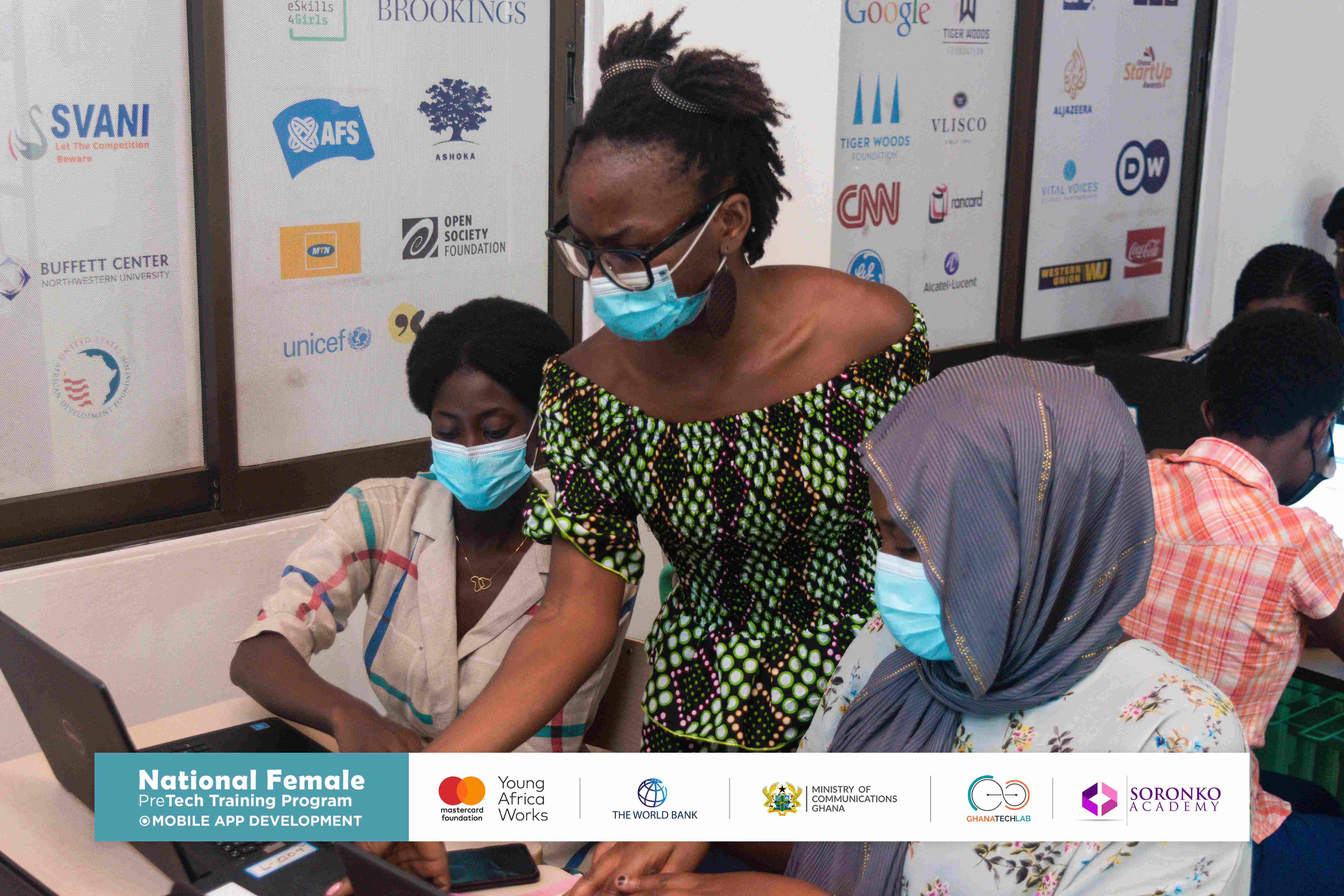The third day of the National Female Pre-Tech training began with a recap of the previous day’s discussions. The students were tasked with creating a comprehensive UI from the prior session. The trainer tasked them with creating more pages for their Kwafrique app, which she double-checked before today’s session.
Participants in today’s session were shown how to design frames. A mobile development framework is a software framework that is intended to aid in the creation of mobile apps. It is a software library that provides a basic structure to aid in the building of applications for a certain environment. Assisting the lead trainer was Ms Blessing Babilah, who took the students through the design of a frame. According to Ms Babilah, every design you create should be in a frame. Be it a desktop, tablet, or mobile, it can be found on Figma.
The next thing was prototyping. Prototyping, in the context of mobile software development, is an interactive but not yet functional draft of a future application. It shows the UI design, the user flow, and the planned functionality of the potential mobile app. For example, an iOS app prototype roughly shows how an application would look on the screen resolutions of respective iPhone models.
Prototyping involves modelling the app’s UI design without actual coding and belongs to the pre-development stage. It may be performed as an integral part of the planning stage before mobile app development or as a separate service provided by software development companies. Since it is a rough draft, it may be done by a project manager without a design team. With the trainer’s assistance, the class went ahead to flesh out the rest of the pages and design their frames thereby adding functionality to their designs, i.e. prototyping.
At the end of the class, the trainer again tasked the students with another assignment. She told them to add to their designs from the previous day by adding functionality to their previous designs. That is to create a three-page design in FIGMA using frames.


